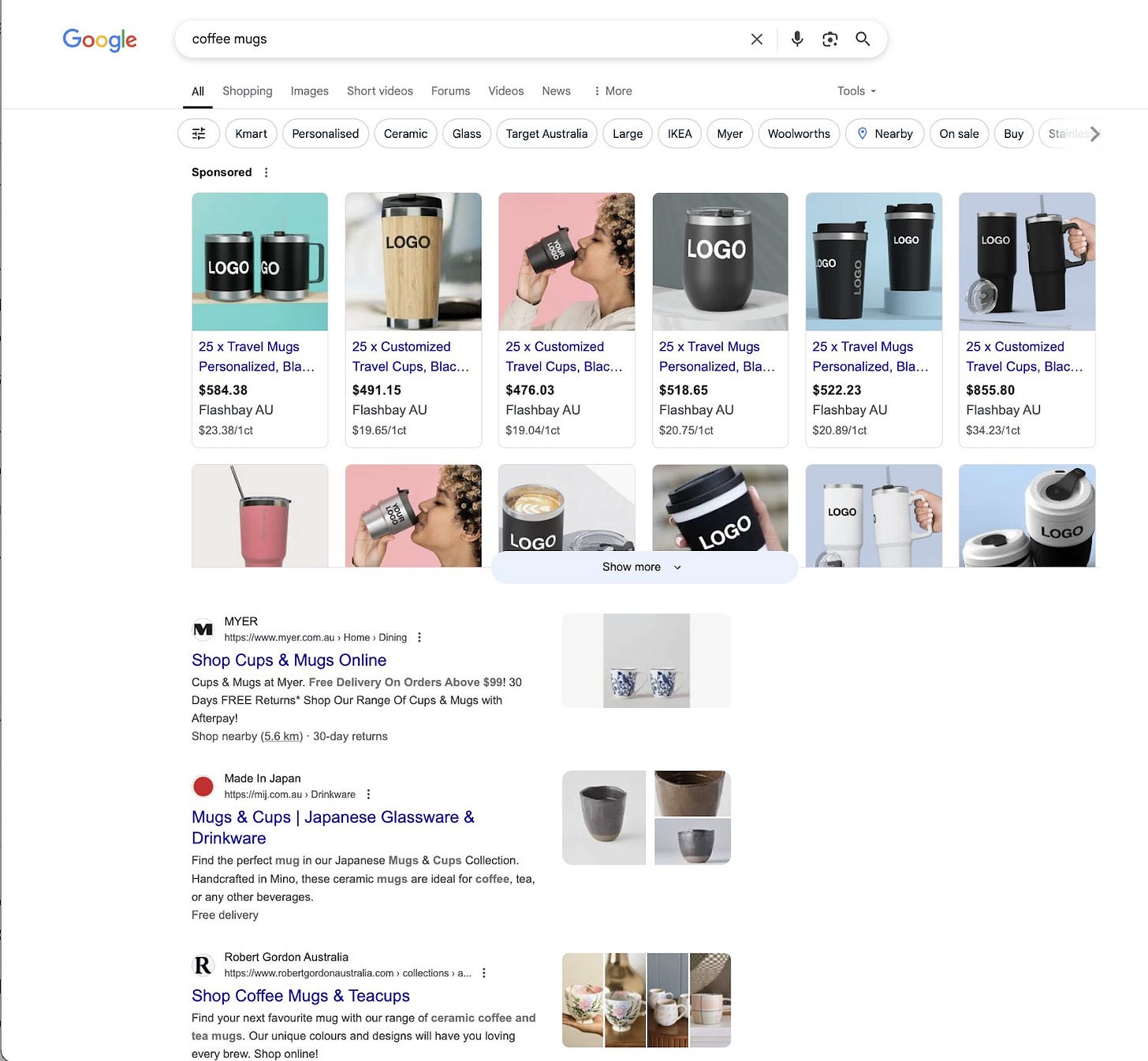The Invisible Anxiety Layer
📉 Why your clean UX isn’t converting,and what to fix before your next test, Is Search Losing to Shopping, and more!
Howdy Readers 🥰
In this newsletter, you’ll find:
📉 The Invisible Anxiety Layer Killing Mobile Conversion: Why your clean UX isn’t converting,and what to fix before your next test
🛒 Is Search Losing to Shopping?
🚀Tweet of the Day
If you’re new to Buyology then a hearty welcome to you, You’ve reached the right place alongside 50k+ amazing people, Before you forget, if someone forwarded this newsletter to you, don't forget to subscribe to our newsletter so you never miss out!
Together with Insense
Find your perfect influencers in 48 hours - who actually follow the brief!
UGC delivers 4× higher CTRs and 50% lower CPC than traditional ads.
But... trying to source & manage creators yourself is time-consuming.
You need Insense’s carefully vetted marketplace of 68,500+ UGC creators and micro-influencers from 35+ countries across the USA, Canada, Europe, APAC, and Latin America
Major eComm brands are using Insense to find their perfect niche creators and run diverse end-to-end collaborations from product seeding and gifting to TikTok Shop and affiliate campaigns, and whitelisted ads.
Quip saw an 85% influencer activation rate with product seeding
Revolut partnered with 140+ creators for 350+ UGC assets
Matys Health saw a 12x increase in reach through TikTok Spark Ads
Try Insense yourself.
Book a discovery call by May 30 and get a $200 bonus for your first campaign.
📉 The Invisible Anxiety Layer Killing Mobile Conversion: Why your clean UX isn’t converting,and what to fix before your next test
You optimized your mobile site for speed. You trimmed fields, simplified the cart, minimized the steps. But conversion is still stalling at the final screen.
This isn’t a UI issue. It’s a trust collapse,triggered by absence. Not bugs. Not popups. What’s missing is confidence scaffolding,the subtle psychological cues that signal safety before someone hits “Buy.”
The Anxiety Layer Most Teams Ignore
On mobile, users are physically closer to the buy button,but emotionally further.
Why? Because checkout flows often go silent at the worst possible time.
No confirmation of what happens next. No soft reassurance. No visibility into who’s behind the brand. Just a price, a button, and a leap.
That leap is the problem. Even high-intent buyers second-guess mobile purchases because they’re not being walked through the final moment.
What Your Customer’s Brain Is Asking (But You’re Not Answering)
“Is this refundable if it doesn’t fit?”
“How long will shipping take exactly?”
“Are there extra costs I’m not seeing?”
“Is this legit or will I regret this in two taps?”
These aren’t technical questions. They’re emotional triggers. And in a mobile checkout environment, where space is limited and urgency is high, they tend to go unaddressed.
The Fix: Micro-Reinforcement Layering
Before you rewrite the UX, install this system across mobile checkout:
1. Delivery Reassurance (Positioned Near CTA)
→ “Arrives in 4–6 days, tracked & insured.”
2. Support Proximity Signal (Below Form Fields)
→ “Need help? Live chat available even after purchase.”
3. Refund Confidence Cue (In Payment Block)
→ “Easy 30-day return if it’s not a fit.”
4. Price Finality Stamp (Under Total)
→ “No hidden fees. What you see is what you pay.”
5. Trust Bridge (Branded Footer or Icon Layer)
→ Secure checkout + review stars + brand statement in a quiet band
This isn’t fluff,it’s friction-proofing.
Why It Matters
Mobile conversion is often lost not to distraction, but to silent hesitation. Fixing your layout won’t recover trust that was never built.
The real unlock? Don’t optimize for clicks. Optimize for calm. If you’d like to see this system mapped onto a Figma-ready mobile checkout UI or paired with a 3-message post-purchase SMS reassurance series, I’ll build the whole kit.
🛒 Is Search Losing to Shopping?
Ecommerce search ads aren’t dead, but they’re undeniably fading into the background. Google’s SERPs now prioritize Shopping over traditional text ads, driven by AI-fueled formats and campaign automation.
The Breakdown:
1. Shopping Now Dominates the SERP - Google's SERPs are increasingly product-first, with PLAs and filters crowding out text ads. Carousels, multi-row formats, and visual layouts mimic a full shopping page. Search ads are often buried, or missing entirely.
2. Performance Max & AI-Driven Evolution - Campaigns like Performance Max and AI Max absorb traditional search functionality with less advertiser control. Google is even testing intent-based matching over keyword-based targeting.
3. Search Still Has Strategic Value - Traditional search ads still win on long-tail queries, brand protection, and A/B testing. They offer control Shopping lacks, especially in targeting and message testing. But their role is now more supplemental than central.
4. E-commerce Strategies Must Adapt - Feed quality, product visuals, and campaign structure now matter more than keywords. Overlap across campaign types must be managed carefully.
Google is clearly favoring Shopping in both design and strategy, and AI is accelerating that shift. E-commerce brands can’t afford to cling to search-centric models alone. Adapting fast means staying relevant, discoverable, and competitive in a Shopping-first world.
🚀Tweet of the Day
Advertise with Us
Wanna put out your message in front of over 50,000 best marketers and decision makers?
Checkout our Partner Kit here🤝
At Buyology, we care about our readers and want to provide the best possible experience. That's why we always look for ways to improve our content and connect with our audience. It would be amazing if you could hit us up with feedback about our content or absolutely anything, we are always up for a chat 🥰
Thanks for your support, We'll be back with more such content 🥳



